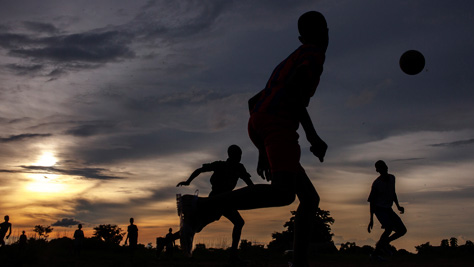MRM Phasing Out
 © UNICEF/NYHQ2012-0898/Brian Sokol
© UNICEF/NYHQ2012-0898/Brian Sokol
When should MRM stop?
The MRM is terminated in-country when all parties have been delisted for one cycle of the Secretary-General's Global Annual Report. Parties can be delisted when the UN verifies that violations for which the party was listed have ended during the previous global Secretary-General report cycle, and Action Plans on those violations have been finalized. In exceptional circumstances where it may be very difficult or not possible to develop an Action Plan with a party to conflict but where violations have ceased, the CTFMR co-chairs should seek guidance from the OSRSG-CAAC and UNICEF headquarters on how to proceed in the given circumstances.
In a country situation where all parties to the conflict have been delisted in the Global Annual Report of the Secretary-General on CAAC, the CTFMR should engage in a discussion about the termination of the formal MRM. The co-chairs of the CTFMR should deliberate with their respective headquarters and with O/SRSG-CAAC. An initial informal assessment can ensure a systematic overview of the situation, and gauge that risks and other relevant issues in the short- to medium-term future are properly taken into account. After completing technical-level discussion with the O/SRSG-CAAC and their respective headquarters, the CTFMR co-chairs may make a recommendation on this basis in writing to the SRSG-CAAC in New York. Final decision to terminate the MRM will be made with consultation and agreement of the SRSG-CAAC in consultation with the UN Task Force on CAAC in New York.
Moving forward - A phased approach
If there is a delisting and formal MRM ends, this does not mean that all monitoring ends. Indeed, it is recommended that Security Council Resolution 1612 monitoring continues informally for at least one cycle of the Global Annual Report, to ensure there are no renewed violations. Please note, in certain circumstances the MRM has been terminated in a country; but has been re-activated at a later date as information of renewed violations is confirmed.
Beyond this, efforts should be made to ensure a proper handover to other monitoring systems that exist or to emerging initiatives, as appropriate. Where possible, the CTFMR should support capacity and continuity, so that if grave violations of children do occur, they will be monitored and reported on.
During the phasing out, data and reports should be safeguarded, and the CTFMR should ensure that any transfer of data does not put victims and witnesses at risk. For example, it would be unethical to transfer data to government, if it was a party to conflict that was monitored.
Phasing out should also consider how skills, knowledge and systems created through the MRM can support broader and ongoing monitoring of child rights violations. For example:
- Specific materials developed for MRM training on interviewing children, documentation, etc., may benefit broader child rights monitoring training and capacity building.
- Referral mechanism for appropriate services and justice mechanisms.
- Development of appropriate monitoring tools - This may be based on the tools used for MRM but will require providing a broader function, responding to a wider range of child rights and enabling case management.
- Development of an information management system. It might be applicable to build on software developed for MRM, but it should not contain any data if this is provided.
- The UN and NGOs, as appropriate, should maintain or develop relationships with armed forces and non-state armed groups to ensure that there can be a response to any violations committed.